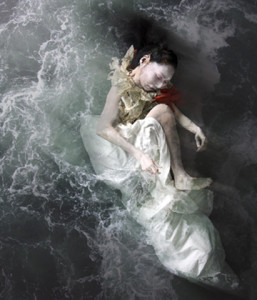Julia Kristeva defines the abject as, “the human reaction (horror, vomit) to a threatened breakdown in meaning caused by the loss of the distinction between subject and object or between self and other. The primary example for what causes such a reaction is the corpse (which traumatically reminds us of our own materiality); however, other items can elicit the same reaction: the open wound, shit, sewage, even the skin that forms on the surface of warm milk” (Dino). Yet, even though we are repulsed by the abject, we are also drawn to it or even desire it. It acts as a catharsis. In a perverse way, we are drawn to the abject as a way to protect us from it. Literature gives the reader a safe way to experience this. It reminds me of Helena Maria Viramontes story, “The Moths”. In it, the protagonist, a young girl, bathes her recently deceased grandmother as a way to purify and show her respect. What might be mildly uncomfortable for the reader turns into repulsion, because the granddaughter gets in the bathtub with her grandmother to wash her. It’s the close proximity to death that creates this disturbing, skin crawling feeling. She also describes her aged body in great detail. Yet, it gives the reader catharsis to experience death and its attendant feelings from a distance. The grandmother is the abject body. The reader might feel revulsion, but we also know that we will meet the same fate. If things go “well”, our corpse will also be the aged body.
Works Cited
Dino, Felluga. “”Modules on Kristeva: On the Abject.” Introductory Guide to Critical Theory.” 21 February 2014. Purdue University. 2014. <http://www.purdue.edu/guidetotheory/psychoanalysis/kristevaabject.html>.

